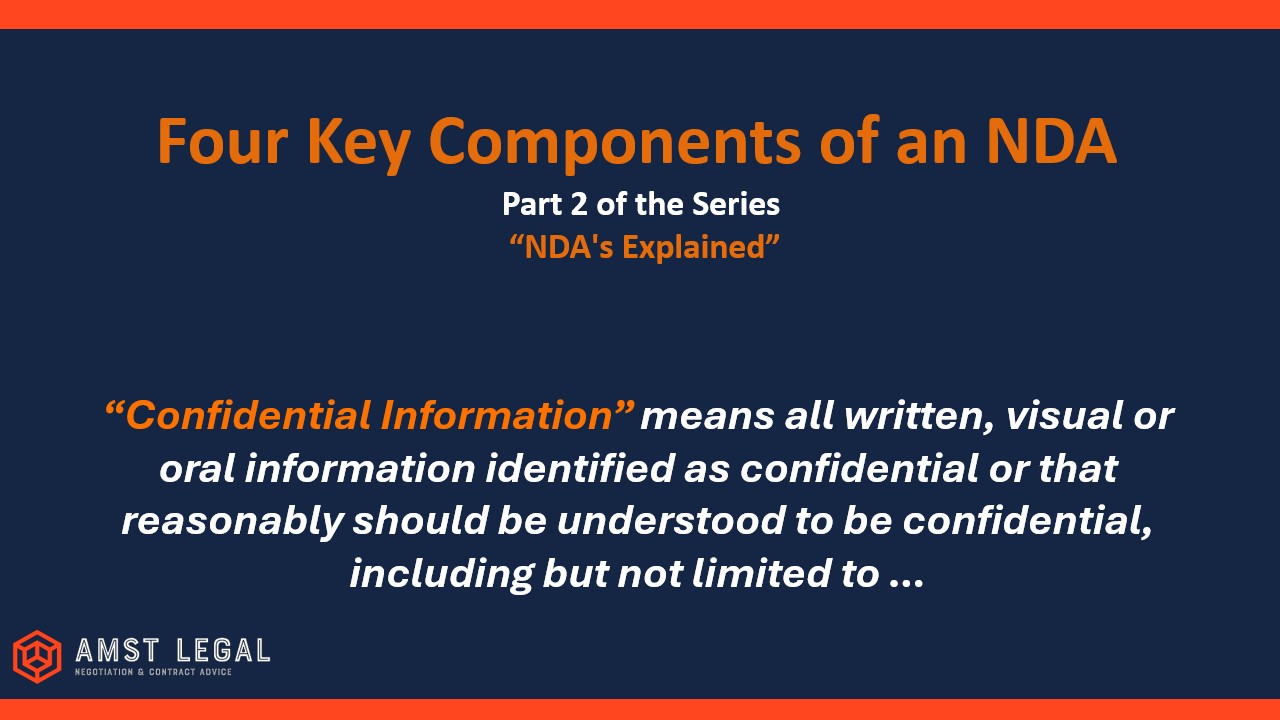
NDAs Explained – What You Need to Know (part 1)
NDAs ensure that confidential information is used solely for the specified purpose set out between the parties in a business relationship. In the world of business, where ideas, innovations, financial information and secrets are the keys to success, Non-Disclosure Agreements (NDAs) often play an important role in protecting a company’s confidential information. This article will provide a comprehensive overview of NDAs in the context of Business to Business (B2B) dealings.
What is an NDA?
An NDA, also referred to as a Confidentiality Agreement, is a legally binding contract between two or more parties to protect confidential information which may be shared during the course of their business relationship. More specifically, confidential information is non-public information of a company that could harm the company when it would be shared in public. Usually a list of the Confidential information is included in the NDA, containing for example: trade secrets, know-how, products and technology-related information, discounts, customer lists, sales and financial information, business plans, etc.
Why and when do we need an NDA?
In the B2B context, NDAs can be an essential tool for protecting proprietary knowledge, trade secrets and other confidential data that is important for a company to maintain its competitive advantages. That sensitive information, therefore, should be defined clearly and carefully in NDAs. However, be careful not to define it too narrow to ensure that you have not missed an important category. By using a properly drafted NDA, your company can secure valuable information from competitors or other third parties who may benefit from the disclosure of such information.
Primary objective
The primary objective of an NDA is to ensure the disclosed sensitive information is securely used and handled, preventing its use or disclosure without proper permission and authorization by the disclosing party. An NDA is often signed at the beginning of a business relationship or before entering into a business relationship.
Example
Common example: a technology company is planning to sell and offer specialized software solutions to an enterprise customer. The companies start by discussing how to integrate the software into the customer’s systems to ascertain the price for the integration and the use of the software. For this, the technology company might share insights about their pricing, SLA, policies and software, and the customer, in turn, might explain their challenges and share business plans. While doing so, the companies therefore plan to share documents including non-public, hence confidential information. This is why it is advised that these companies sign an NDA before sharing this confidential information to each other. Such an NDA can be terminated when the parties sign a final customer contract, which should also include confidentiality terms.
How does an NDA protect your confidential information?
Like any other legal contracts, an NDA carries important legal consequences for breach of contract. Depending on the severity of a breach, its consequence can range from lawsuits, financial penalties to – in extreme cases – criminal charges. Breaching an NDA can also harm a party’s reputation, which may lead to other long-lasting consequences to its business, especially in business relationships and industries where trust and confidentiality are crucial.
Claims and lawsuits relating to a breach of an NDA are not common, but it absolutely happens that a company needs to pay out a penalty for breach of confidentiality. We have even advised on this matter a few times in the past.
What type of NDA do you need?
There are various types of NDA that can be used based on the specific circumstances and the needs of the parties involved. Below are the three common types of NDA:
- Unilateral NDA (One-sided NDA): In a unilateral NDA, one party, typically the seller, imposes on the other party the obligation to secure the information and not to disclose or use the information for any purpose other than what is specified in the agreement. In a B2B context, unilateral NDAs are often used between buyers and sellers. For instance, a Biotech company (seller), may employ a unilateral NDA to prevent the buyer from disclosing sensitive information they have gained during the purchase of products or services, such as intellectual property and computer technology. Also common in Public Tenders and for RFI (Request for information) in RFP (Request for Price) situations.
- Mutual NDA (Two-sided or Mutual NDA): A mutual NDA involves two parties, and both parties will be sharing sensitive information with each other and agree that both sides will be bound by confidentiality obligations. Mutual NDAs are frequently used when the parties need to exchange considerable amounts of confidential information during their negotiations or business relationship. Such situations can be Joint Ventures, Vendor Contracts or Mergers and Acquisitions.
- Multilateral NDA (Three or More Parties NDA): A multilateral NDA includes three or more parties, where at least one party shares sensitive information with other parties and enforces confidentiality obligations. This type of NDA streamlines the paperwork and administration for the parties in a sense that the parties do not need to enter several unilateral or bilateral NDAs with one another. In a business relationship involving three parties, where all anticipate disclosing confidential information, a single multilateral NDA can replace the need for three different bilateral NDAs between each pair of parties. Such situations can be Partnerships, Government Contracts (like defense and aerospace contracts) and Consortium Agreements.

